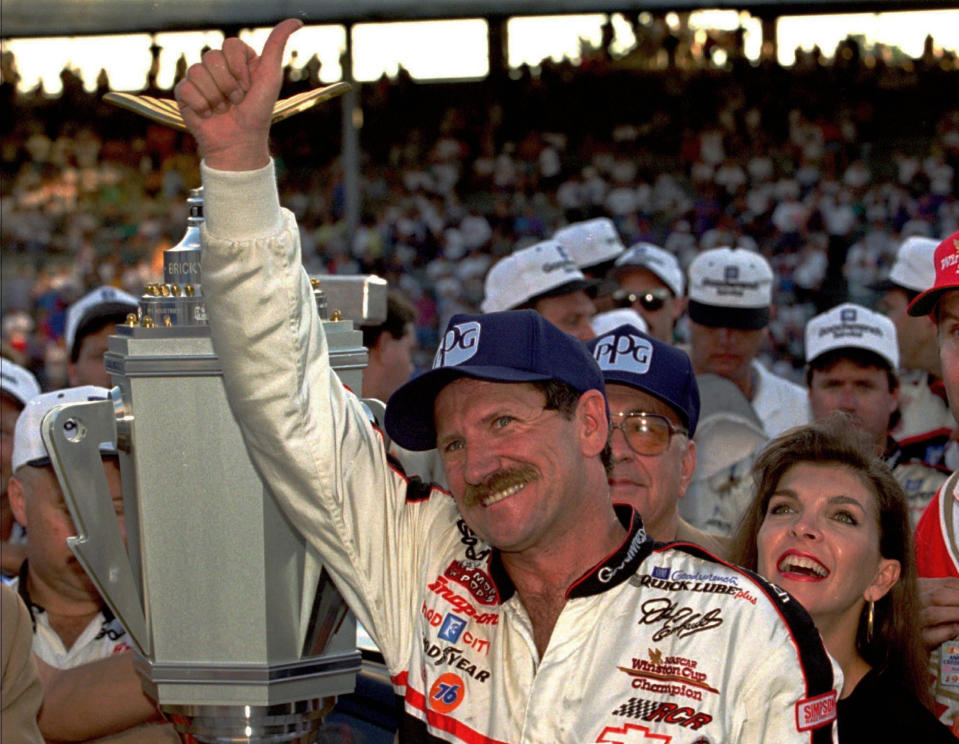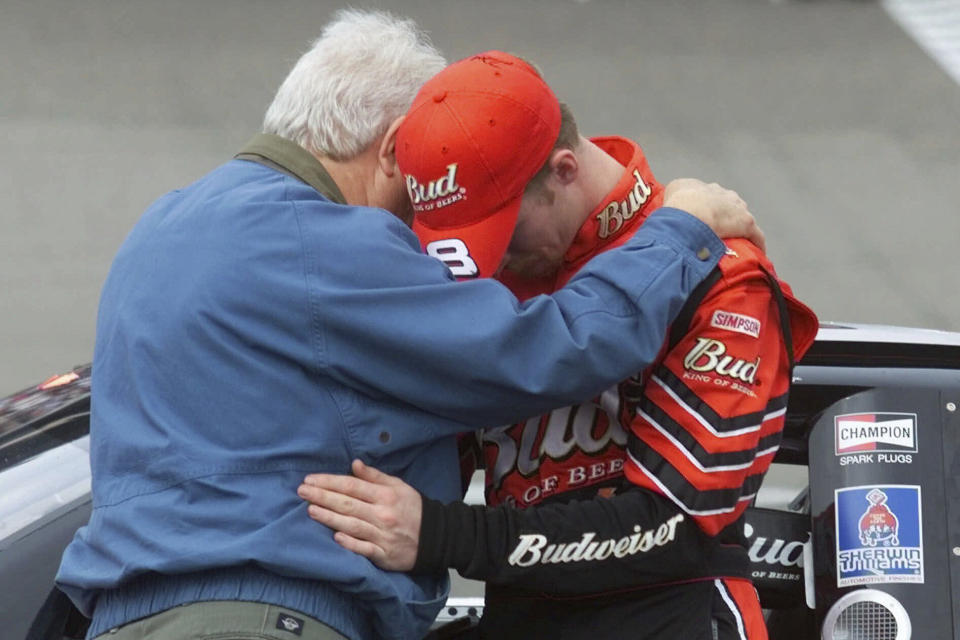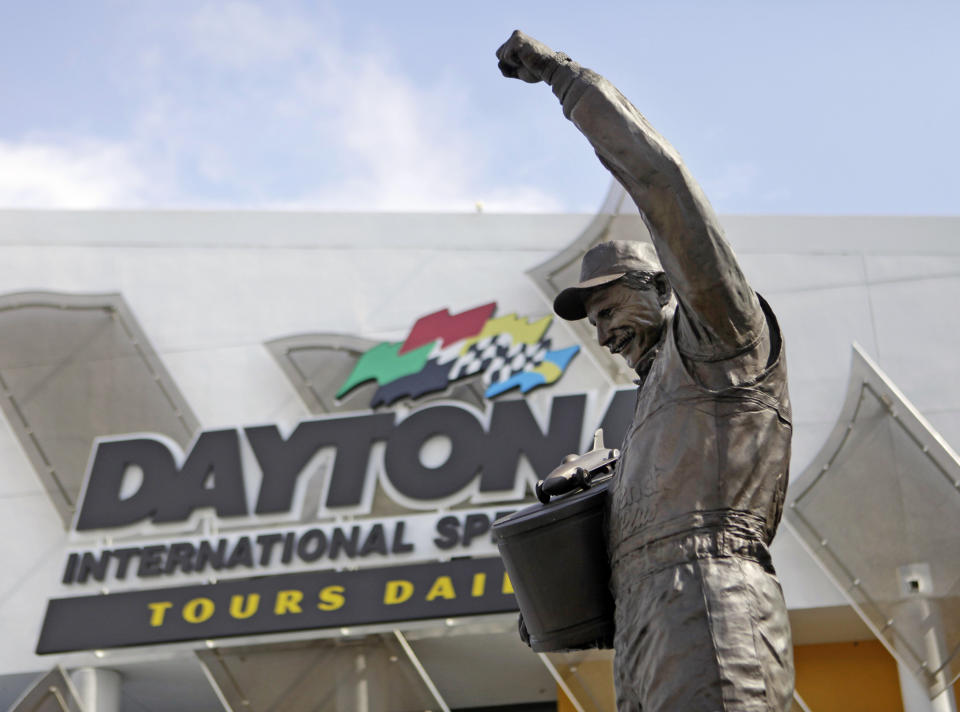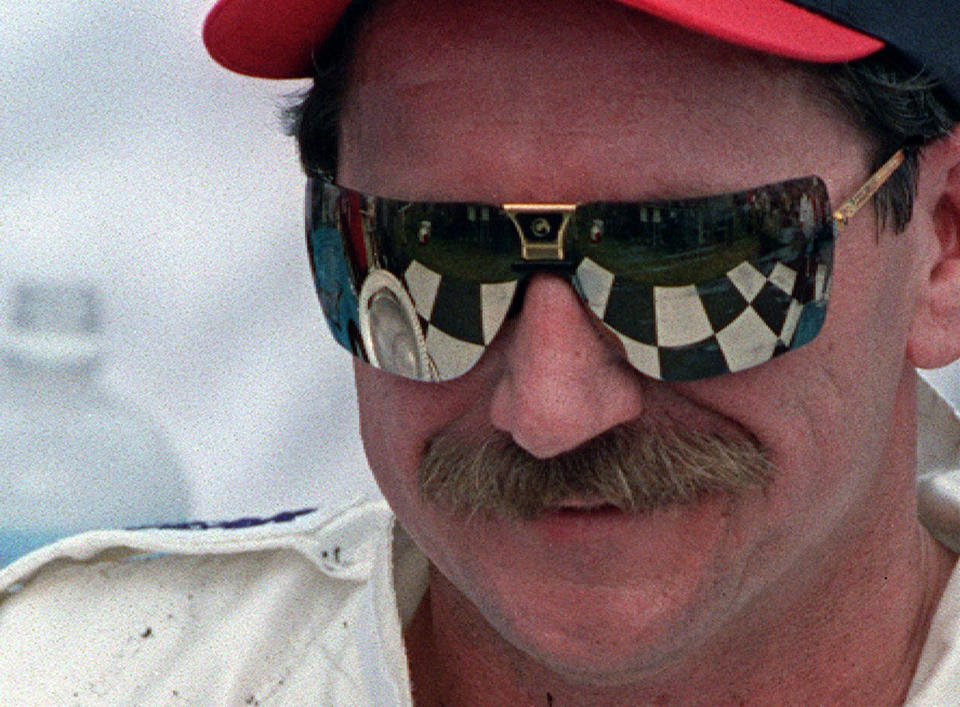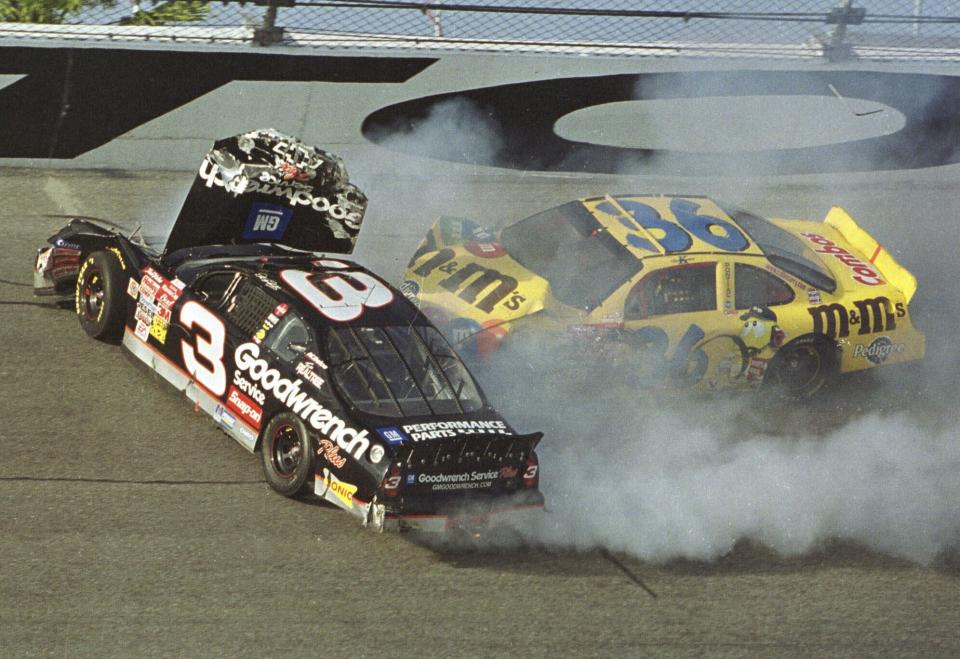Death of Dale Earnhardt in 2001 Daytona 500 picked as NASCAR's most pivotal moment
- Oops!Something went wrong.Please try again later.
The 2001 Daytona 500 remains the bleakest day in NASCAR history.
The death of Dale Earnhardt from a crash on the last lap of the race robbed a family of its patriarch and the industry of the greatest stock car star of his era. But beyond the seven championships, The Intimidator persona and fierce rivalries that ushered NASCAR into the mainstream, Earnhardt’s enduring legacy may be how his death changed auto racing safety.
NASCAR was still reeling from three driver fatalities in 2000 -- Adam Petty, Kenny Irwin Jr., and Tony Roper -- ahead of a Daytona 500 that seemed intent on setting a new course for the series.
NASCAR had moved at its own pace to impose safety rules at a time when some drivers balked at wearing enhanced technology such as the Head And Neck Safety (HANS) device. There were complaints that it was too cumbersome for a comfortable ride, while others suggested improvements were too simplistic for a sport that was akin to mayhem on the track.
The Daytona 500 also marked the first year of NASCAR’s six-year, $2.8 billion television contract with Fox and NBC, a TV deal at the time that symbolized NASCAR’s true emergence as a mass-market sports power.
The splashy debut instead was forever marred by Earnhardt’s death at the age of 49.
It forced NASCAR to finally, emphatically confront its safety issues and force life-saving advancements that reverberated throughout every wreck over the last 22 years. Just look at Ryan Newman, who survived a death-defying crash in the 2020 Daytona 500 in large part because of the collective growth -- from the car to equipment -- of safety.
“We lost many lives before him,” three-time Daytona 500 champion Denny Hamlin said, “but until it was ‘The Man’ himself, it wasn’t at the forefront.”
As part of the celebration of NASCAR’s 75th season, The Associated Press interviewed 12 veteran contributors to the industry on topics ranging from the most memorable race to key challenges ahead. With the death of NASCAR’s toughest star from a basilar skull fracture, Earnhardt’s crash was picked as the most pivotal moment in NASCAR history.
It was not a unanimous choice: Richard Petty and team owner Eddie Wood noted how in 1971 tobacco giant R.J. Reynolds branded the elite series in NASCAR the Winston Cup and made racing sponsorship on a car as common as four wheels and a race number. The long-ago meeting at the Streamline Hotel that led to the formation of NASCAR appealed to team owner Rick Hendrick as the most pivotal moment.
And while safety measures over the last two decades grabbed the spotlight, it was NASCAR’s waning popularity and the impossible search for the next Earnhardt in the wake of the crash that got it a vote from Deb Williams, an AP panelist now in her fourth decade of racing coverage.
“Thousands of fans lost interest in the sport with Earnhardt’s death while others didn’t like the changes in racing formats,” she said. “They also didn’t like the changes the new TV contract brought because they believed the sport’s history was cast aside. Motorsports historians often point to Earnhardt’s death as the beginning of the sport’s decline.”
There are but a few instances in any sport where tragedy stands at the forefront of most fans’ minds. There are no grainy replays or second-hand stories passed down about the event. The clip is just a click away on any device.
“It changed everything for NASCAR,” said veteran driver Lyn St. James.
NASCAR has yet to have another death in the series since Earnhardt was killed. On the 20th anniversary of the 2001 Daytona 500, The Associated Press noted the three biggest safety upgrade s over that span:
— SAFER Barriers: The Steel And Foam Energy Reduction Barrier was designed to absorb and reduce kinetic energy during high-speed crashes. “ Soft walls ” have been gradually added to nearly every NASCAR track, first in high-impact areas and later, after Kyle Busch broke both legs in a 2015 crash at Daytona, over nearly every spot of exposed wall.
— HANS device: NASCAR mandated the use of head-and-neck restraints in late 2001. Drivers had resisted using the U-shaped neck restraint made of carbon fiber because they found it restrictive. They became required equipment after 25-year-old Blaise Alexander was killed in a crash at Charlotte Motor Speedway eight months after Earnhardt’s death.
— Redesigned cars: NASCAR has developed three new cars since 2001, each one adapting to the latest technology. The latest “Next Gen” car debuted in 2022 to some controversy. Drivers expressed anger and concern about their safety after multiple drivers suffered concussions.
Yet through missed races, hospital stays, even premature ends to a career such as 2004 NASCAR champion Kurt Busch’s from the lingering effects from a concussion, each driver walked away and lived another day.
In their own solemn way, every NASCAR driver that gripped the wheel since 2001 can pay respect and appreciation to how the death of an old-school driver led to pivotal revolutions in thinking and technology that continue through today.
__
AP NASCAR at 75 voting panel: Edsel Ford, long-time Ford executive; Tony Gibson, retired NASCAR crew chief; Jeff Gordon, four-time NASCAR champion; Denny Hamlin, three-time Daytona 500 champion; Rick Hendrick, founder of Hendrick Motorsports; Jimmie Johnson, seven-time NASCAR champion; Winston Kelley, executive director of the NASCAR Hall of Fame; Steve O’Donnell, Chief Operating Officer for NASCAR; Richard Petty, NASCAR Hall of Fame driver; Lyn St. James, one of nine women who have qualified for the Indianapolis 500; Deb Williams, award-winning NASCAR journalist; Eddie Wood, co-owner of Wood Brothers Racing.
___
AP auto racing: https://apnews.com/hub/auto-racing and https://twitter.com/AP_Sports
